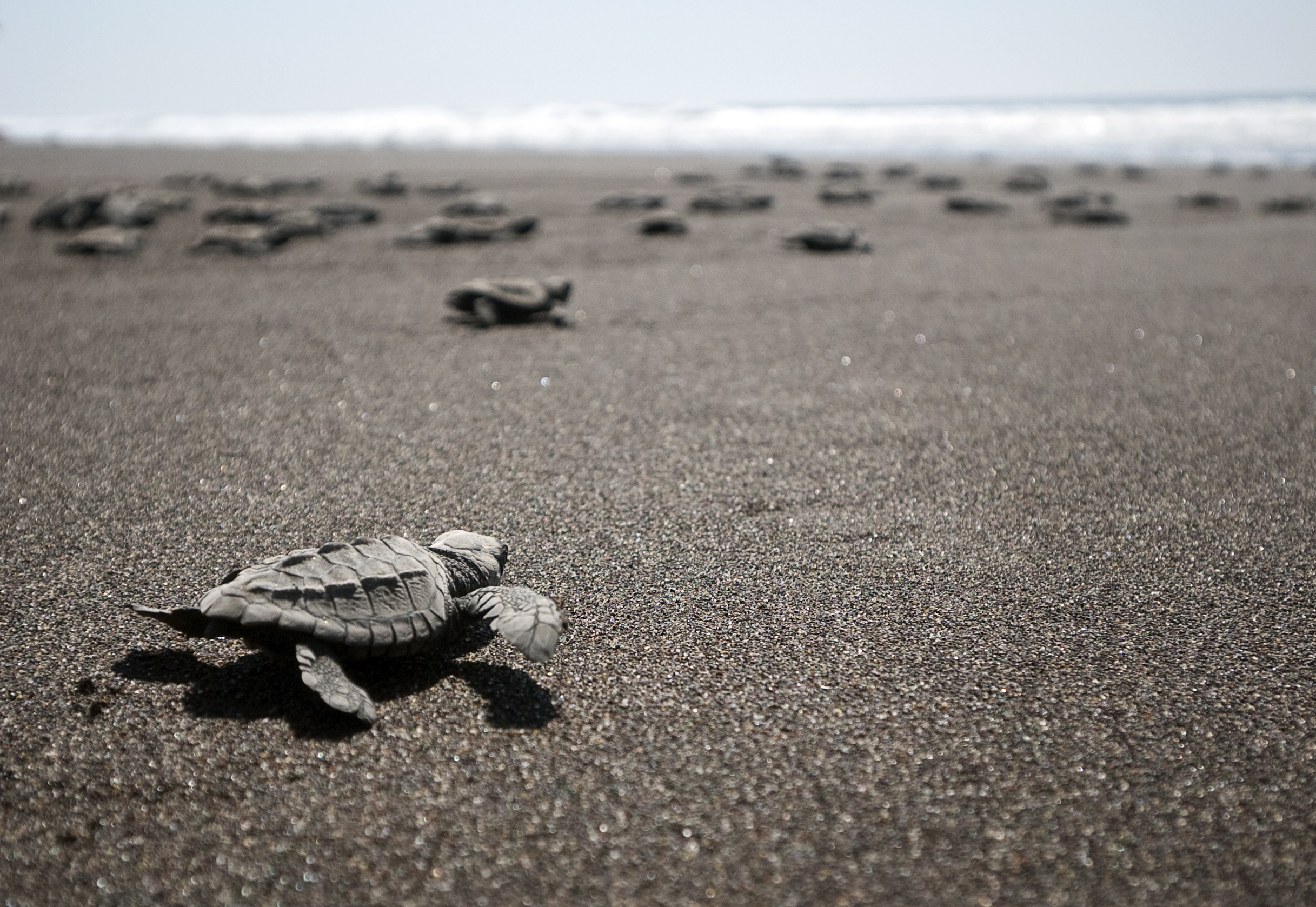By Ron Denom
Thanks to COVID-19, I am watching more TV news, in particular BBC International, which has been showing clips of smog- and traffic-free cities such as Beijing, Delhi and L.A., along with examples of how Mother Nature is reacting positively to the sharply-curtailed level of human activity.
One particularly striking clip showed hundred of thousands of sea turtle hatchlings emerging from their nests on Indian beaches and scurrying into the ocean. It was reported that no one could recollect having seen such a plentiful cycle of sea turtle regeneration ,and it was attributed to the absence of humans on the beaches because of the COVID-19 lockdown.
Closer to home, a recent report from the Rocky Mountain Institute quoted staff member Chris Nelder: “I really believe that as we start to come out of this, a lot of people are going to think, ‘I don’t want to go back to polluted air and all that noise.’ I believe that there will be much more awareness and interest in cleaning up our soundscape and our air, now that people have had a taste of what it can be like.“
COVID-19 has come to dominate the news cycle, but that does not mean that climate change and related consequences such as California’s fire season and other extreme weather events have gone away.
The taste or desire for a healthy ecosystem and a better quality of life is just about universal. There has been a lot of talk about fighting global warming by reducing carbon emissions, but, at the individual level, it is all a bit fuzzy—there doesn’t seem to be any one thing that one can do (or get behind) that is really going to create the mass movement needed to make a difference. The appearance and adoption of attitudes, behaviors and technologies that reduce or limit carbon emissions is fragmented and uptake is slow. It has taken an extraordinary public health crisis to show us that there are real and worthwhile benefits to not going back to our old bad habits.
So we have a catalyst for change. The question is: what can we do that will “move the needle” in the direction of better lives for us all?
The solution must not impose any compromise to quality of life, and people who adopt it must see a lower cost and greater benefits compared to whatever they are doing or using now. Residential solar power and electric mobility are both promising areas for significant reductions in carbon emissions, but something is still holding people back, preventing their adoption at a scale that would make a difference.
dcbel sits at the nexus of residential solar power, electric vehicle charging, the smart home and customer-centric utilities. Our team has a proven history of rethinking energy distribution for everything from large utility customers to distributed energy resource providers.
Our current focus is single-family suburban residences, where the combination of domestic energy use and the propensity for higher automobile use provides a convenient way to involve many individuals and families in carbon footprint reduction. Given the size of suburbs around medium and large cities everywhere in the world, a breakthrough technology would certainly have the possibility of making a substantial difference in the fight against climate change.
dcbel has made such a breakthrough in the areas of solar power generation and electric mobility that makes both more affordable. The constant conversion and re-conversion of DC into AC and AC into DC is part of the inherent costs of both residential solar and electric mobility.
dcbel has invented a new technology that makes the converter smaller and lighter, and the solar power, EV charging and vehicle-to-home discharging systems simpler and less expensive.
We then combined this technology with advanced control and sensing hardware, powerful algorithms, sophisticated grid edge and cloud software, and artificial intelligence (AI) to produce the dcbel family of products. These products profoundly change the way that energy is managed at home:
- The homeowner is transformed into a smart and active partner in a next-generation electric network that is distributed, digitized, and decarbonized.
- The family electric vehicle is now an important home energy asset that reduces consumption charges and powers the family home during grid outages.
- The sun partially or fully powers the home and charges the car.
- The homeowner and the load-serving entity (utility, ESCO, CCA, etc.) have a bidirectional business relationship that equitably shares the benefits of the two-way power flows and the respective investments made on both sides of the meter.
Of course, dcbel is an intelligent and automated device which, after initial setup by the installer, works quietly in the background, placing minimal demands on, and producing maximum benefits for, the homeowner and the family. And just think: with dcbel at home and your money-saving EV on the road, you will never have to touch a germ-infested gas pump handle again!
The smart home starts with dcbel smart energy—good for the family, good for the community, good for the planet!


